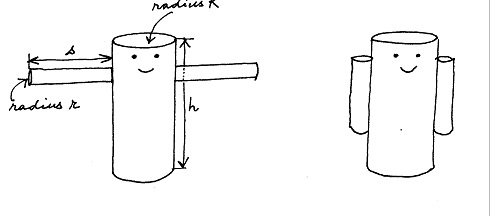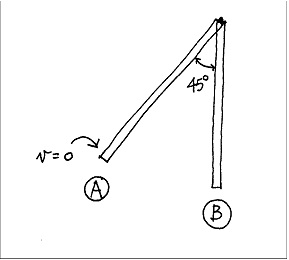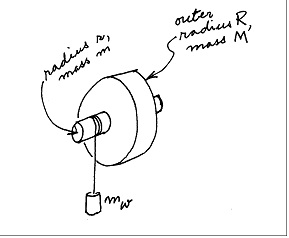Assignment:
Question 1. The figure skater effect. Figure shows the world-renowned Russian figure skater Alicia Itzolova, celebrated for her remarkably cylindrical figure. As she enters her final spin, she may be modelled as a homogeneous cylinder of radius R, height h, and density _, with outstretched arms. The arms are cylinders as well, also of density _, radius r, and length s. All these lengths are simple multiples of r:
R = 4r
h = 36r
s = 16r
When the skater lowers her arms rigidly in her trademark style, her moment of inertia decreases.
(a) Calculate the moment of inertia about the axis of the cylindrical body Ibody, the moment of inertia of each outstretched arm Iout, and the moment of inertia of each arm when it is parallel to the axis of rotation, Idown, as shown in the 1. Leave all expressed in terms of pi(3.14), r, and roe(density’s symbol), for later convenience.
(b) By what factor does the skater’s angular speed increase? Explain your reasoning, particularly any physical principles involved, and any approximations you are making.
(c) Compare the skater’s kinetic energy before and after, to show that it is not conserved.

Question 2. A thin dowel rod of mass m = 0.10 kg and length L = 40 cm swings freely like a pendulum from its top end. It is released from rest from position A (see Figure), at an angle of 45 degrees from the vertical.
(a) What is the moment of inertia of the rod about its rotation axis in this case?
(b) What is the magnitude of the torque on the rod when it is at position A? What is its direction?
(c) What is the magnitude of the angular acceleration of the rod when it is at position A?
(d) What is the linear acceleration of the lower end of the rod when it is at position A?
(e) What is the kinetic energy of the rod when it passes through position B, i.e. when the rod is vertical?

Question 3. A flywheel is used to store energy. The wheel itself is a homogeneous cylinder of mass M with a hole in the middle where the axle connects with it. The outer radius of the wheel is R. The radius of the axle, which is also the inner radius of the wheel, is r, and the mass of the axle is m. A weight of mass mw is suspended from a string wound around the axle. The axle is also a homogeneous cylinder. See Figure.
(a) Calculate the moment of inertia of the flywheel + axle combination in terms of the variables given in the problem. In what follows, call this I.
(b) Express the kinetic energy of the flywheel, and the kinetic energy of the falling weight, in terms of the variables given in the problem, and the instantaneous angular speed (omega symbol)
(c) Express (omega symbol) as a function of h, the height that the falling weight drops, assuming that everything starts from rest. State any other assumptions you make, and why.
